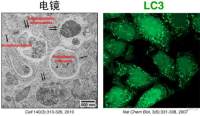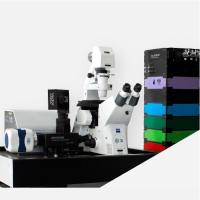An Introduction to Confocal Imaging
互联网
541
The major application of confocal microscopy in the biomedical sciences is for imaging either fixed or living tissues that have usually been labeled with one or more fluorescent probes. When these samples are imaged using a conventional light microscope, the fluorescence in the specimen away from the region of interest interferes with resolution of structures in focus, especially for those specimens that are thicker than approx. 2 μm (Fig. 1 ). The confocal approach provides a slight increase in both lateral and axial resolution, although it is the ability of the instrument to eliminate the “out-of-focus” flare from thick fluorescently labeled specimens that has caused the explosion in its popularity in recent years. Most modern confocal microscopes are now relatively easy to operate and have become integral parts of many multiuser imaging facilities. Because the resolution achieved by the laser scanning confocal microscope (LSCM) is somewhat better than that achieved in a conventional, wide-field light microscope (theoretical maximum resolution of 0.2 μm), but not as great as that in the transmission electron microscope (0.1 nm), it has bridged the gap between these two commonly used techniques.


Fig. 1. Conventional epifluorescence image (A) compared with a confocal image (B) of a similar region of a whole mount of a butterfly pupal wing epithelium stained with propidium iodide. Note the improved resolution of the nuclei in (B) , due to the rejection of out-of-focus flares by the LSCM.






